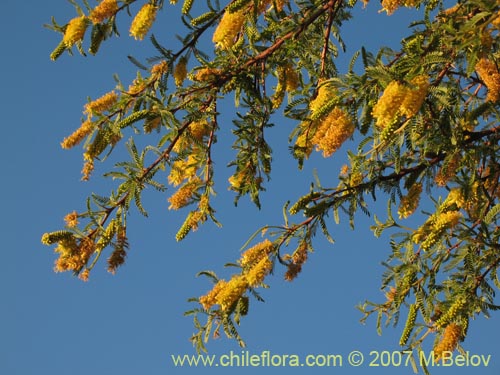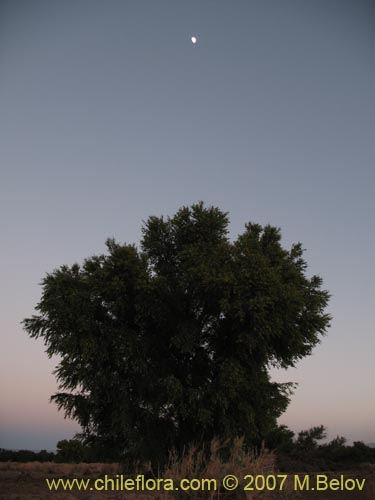|
|

Image of Prosopis tamarugo
Los Flamencos, Chile
Altitude: 2450 m. 11 29, 2007
|
|
| Species: | Prosopis tamarugo Phil. | |
| Family: | Fabaceae | |
| Order: | Fagales | |
| Chilean Name: | Tamarugo | |
| English Name: | ||
| German Name: | ||
| Russian Name: | ||
| Record: | 0920 |
| About 11 Prosopis in Chile and 4 in our data base. | |
| About 311 Fabaceae in Chile and 199 in our data base. |
  |
|
|
|
|
| Endemic Frequent
Height: 20 cm. Good ornamental value (A) |
SILENCE KILLS...Civilized Human Beings can not be Silent Accomplices to Murder and War CrimesDid you know that: |
INTRODUCTIONThis is probably the most extreme tree of the Chilean desert. It can grow where no other plant grows, and the tamarugales, or tamarugo forests, as they are locally known, present an eerie sight - hundreds and hundreds of trees with no other vegetation around... This is due to the fact that these plants can reach very deeply into the ground with their roots and thus make use of underground water. |
|
Image of Prosopis tamarugo Los Flamencos, Chile
|
DESCRIPTIONPlant type: Tree Flower: Yellow, without information on the number of petals Height: 20 cm.
|
|
Image of Prosopis tamarugo Los Flamencos, Chile
|
HABITATIn Chile this species grows in the following environmental conditions:
Habitat according to altitude: Low altitude, interior valleys
Watering conditions: Dry, arid areas, with long drought periods of 6 - 10 months. Precipitations of 100 mm - 300 mm. are concentrated in winter.
Light conditions: Fully exposed to the sun. Level areas or slopes facing north.
|
|
Image of Prosopis tamarugo Los Flamencos, Chile
|
USESGood ornamental value (A)
Useful properties: Fodder plant
|
|
Image of Prosopis tamarugo Los Flamencos, Chile
|
GROWING TIPSThis species has the following hardiness: USDA Hardiness Zone 9. The plant does not tolerate snow, but can tolerate occasional freezing spells of about - 5° C (the typical morning frost of central Chile).
For the germination of seeds you need to break the outer protective skin of the seed. For just a few seeds use a nail-clipper or a file (you have just to scratch the surface, taking off maybe a flake). For larger batches you can use sulphuric acid, mecahnical scarificators or hot water (please see specialized literature before attempting this, as use of concentrated acid is very dangerous). Soak the scarred seeds in water for about 24 hours. They should visibly swell up. If not, you have not scratched them sufficently. This species can grow in most extreme conditions (extremely saline soil, very little watering), so you do not have to worry too much about the substrate, just keep with good drainage. This tree will withstand occasional freezing, but it is not suitable for cold climates with snow. If you are interested in purchasing seeds of this or similar species, please go to our On-line Seeds Shop. |
|
More photos (8) of Prosopis tamarugo Phil. available here |






